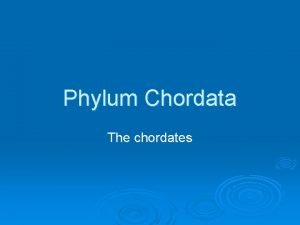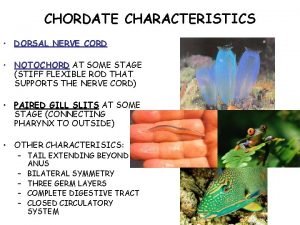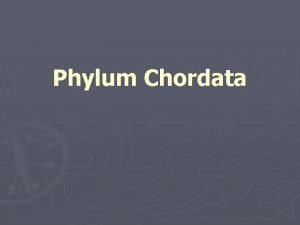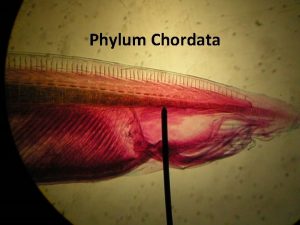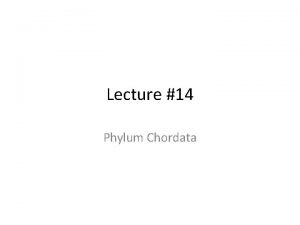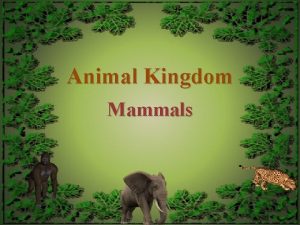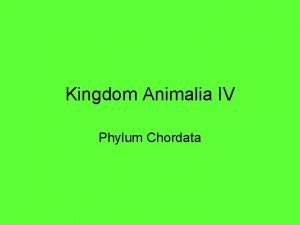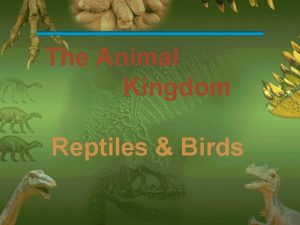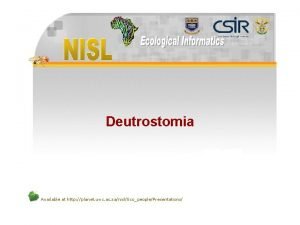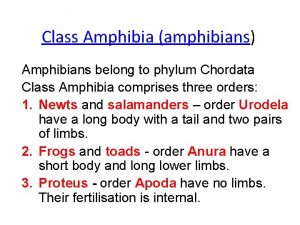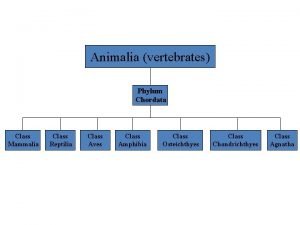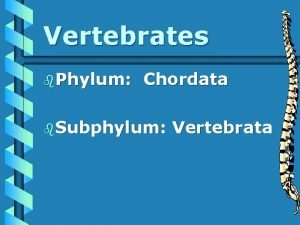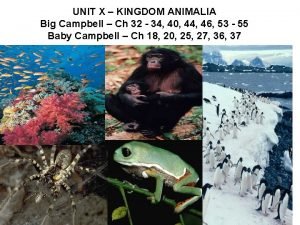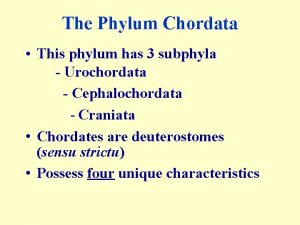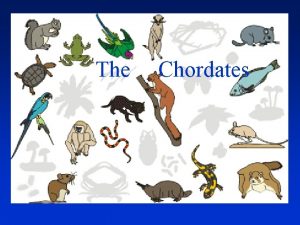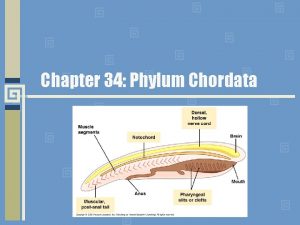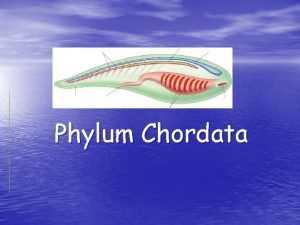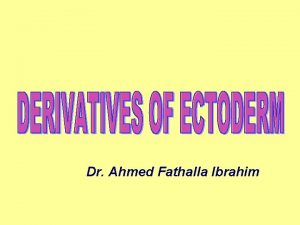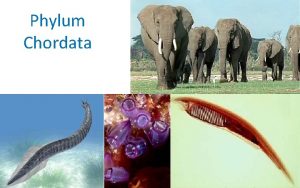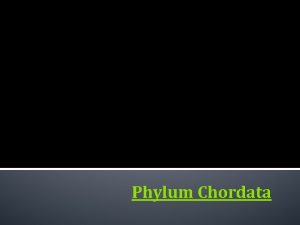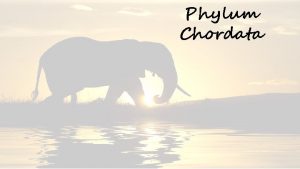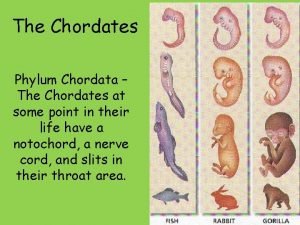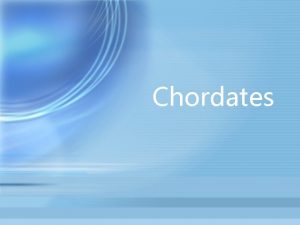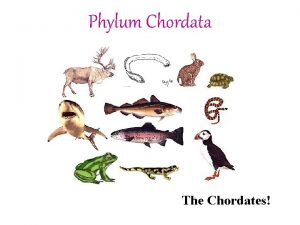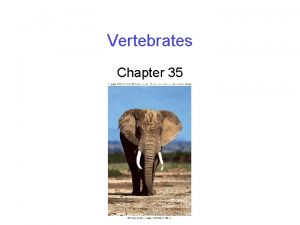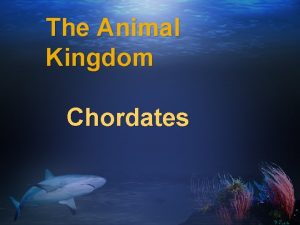Phylum Chordata Characteristics of Chordates Notochord Dorsal nerve















- Slides: 15

Phylum Chordata

Characteristics of Chordates ► Notochord ► Dorsal nerve cord ► Pharyngeal pouches or gill slits ► Postanal tail

► Subphylum Cephalocharodata. This subphylum is composed of about 2 dozen blade-shaped animals known as lancelets. They retain all characteristic throughout life. ► Subphylum Urochordata- This subphylum is commonly known as tunicates ( sea squirts). Larva posses all chordate characteristics while adults exhibit only Pharyngeal pouches.

Subphylum Vertebrata ► All characteristics of chordates ► Distinguishing characteristics § Vertebral column or spine § Cranium or skull that protects the brain § Endoskeleton composed of bone or cartilage

Major groups of Vertebrates

Lampreys and Hagfishes ► Long, eel-like bodies ► Lack jaws ► Paired fins ► bones

Sharks, Skates and Rays ►Class Chondrichthyes § Jaws § Paired fins § Skeleton of cartilage

Boney Fishes ► Class Osteichthyes § Jaws § Most have a skeleton composed of bone

Amphibians ► Class Amphibia § Included frogs, toads and salamanders § Skin is moist and permeable to gases and water § Most lay eggs in water § Most have an aquatic larval stage

Reptiles ► Class Reptilia § Turtles, crocodiles, alligators, lizards and snakes § Skin is dry and scaly § Eggs that can be laid on land

Birds ►Class Aves § Adapted for flight ►Feathers ►Hollow bones ►Unique respiratory system

Mammals ► Characteristics § Endothermy § Hair § Completely divided four chamber heart § Milk produced from mammary gland § Single jawbone § Specialized teeth

Order Monotremata ► Egg-laying mammals ► Most primitive of mammals ► Only three species § Two anteaters and one platypus

Order Marsupialia ► 250 species ► The U. S. has only one species – the Virginia opossum ► Young develop in a pouch

Placental Mammals ► Diverse group composed of at least 18 orders ► 95% of mammals are placental ► They live on land, in water and the air
 Phylum del cocodrilo
Phylum del cocodrilo Bird air sac
Bird air sac Characteristics phylum chordata
Characteristics phylum chordata Dorsal nerve cord
Dorsal nerve cord Urochordata
Urochordata Animals in the phylum chordata
Animals in the phylum chordata What are chordata
What are chordata Animal kingdom phylum chordata
Animal kingdom phylum chordata Phylum chordata mammalia
Phylum chordata mammalia Characteristics of bony fish
Characteristics of bony fish Phylum chordata class amphibia
Phylum chordata class amphibia Aves kingdom
Aves kingdom Phylum chordata class reptilia
Phylum chordata class reptilia Chordata subphylum vertebrata
Chordata subphylum vertebrata Body covering of animals
Body covering of animals Dorsal hollow neural system
Dorsal hollow neural system
